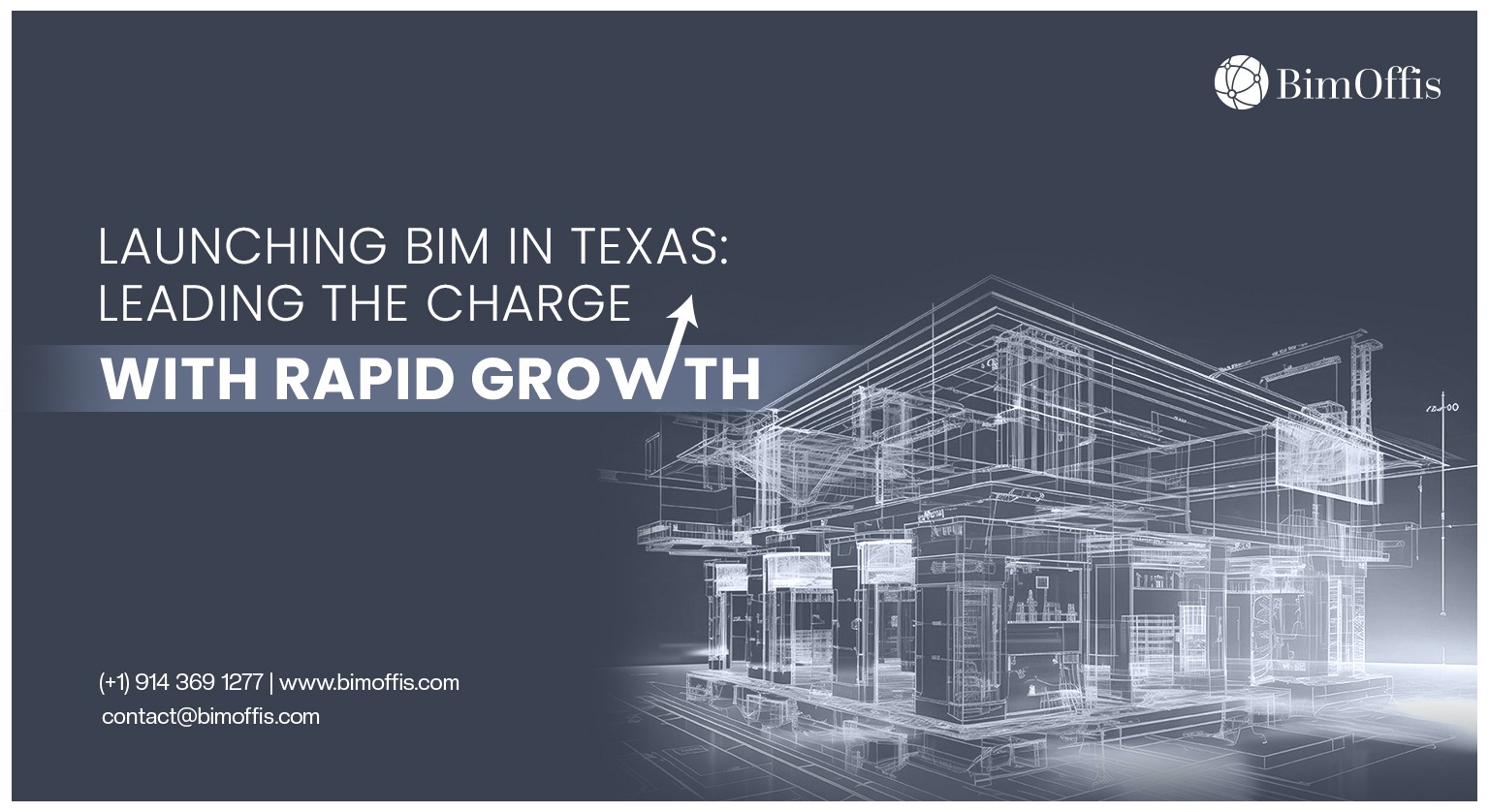The construction and architectural industry is a fast moving industry, and integrating Building Information Modeling, or BIM has revolutionized the creative and executional processes of construction. BIM, which has been adopted widely across the world is disrupting the construction industry through application of new techniques aimed at improving efficiency, enabling collaborations and cutting costs tremendously. Today, I want to share how starting BIM in Texas is not only an addition to our existing activity but a giant leap towards the further evolution of an industry on the verge of becoming incredibly popular.
Why BIM Matters
To start with, BIM cannot be just a tool but is a process at its very basic level. BIM is the process of generating and managing digital representations of physical and functional characteristics of a facility throughout its lifecycle BIM in its essence enables users to define, model, analyze, and share the building and construction project life cycle. ranging from saving on use of raw materials to identifying design errors that would have been costly to rectify before construction of a structure starts BIM offers both environmental and economic benefits.
Due to its thriving economy and a vast physical network, Texas is the right place for BIM implementation. Large scale projects, increasing population and the recent realization of the need for sustainable construction practices makes Texas the ideal place for BIM to grow.
The Texas Advantage
This paper aims to demonstrate how Texas and its faster growing environment for construction and infrastructure provides both opportunities and threats. Today cities like Houston, Austin, Dallas and San Antonio are witnessing rapid growth, the need to build smart and sustainably cannot be overemphasized. BIM is stepping in to address these needs by:
Streamlining Mega Projects: Texas has the most colossal constructions of every type, ranging from numerous storey buildings to the transport system. Through BIM there will be easy integration between the design professionals hence making it possible for the project time line and cost to be achieved.
Enhancing Sustainability: Being proactive on green construction practices, BIM helps in adopting sustainable energies and material in construction, thus helping Texas uphold its niche on the same.
Driving Cost Efficiency: Regarding the later mentioned conflicts, it must mentioned that by researching all the probable conflicts that may occur in the design phase, BIM does not allow costly mistakes to be implemented and thus helps the developers/contractors to save both time and money.
Leading the Charge: Our Approach to BIM in Texas
Implementation of full BIM in Texas is not simply the introduction of technology, it is an inherent change in the entire premise of business within the construction sector. Here’s how we’re leading this transformation:
Education and Training: We teach architects, engineers, and contractors what is necessary for them to get the most out of BIM. With more workshop sessions, certification and practical at the workplace training sessions, we are creating a generation ready for innovation.
Industry Collaboration: BIM has been made possible through cooperation more than everything else. The best way is to engage local government agencies, private companies and universities to achieve a unified environment for BIM implementation starting from basement levels.
Customized Solutions: Understanding the peculiarities of tasks set before the projects in Texas, we propose the BIM solutions which take into consideration the specifics of the region as well as leading practices.
Technology Integration: From modeling tools to augmented reality we’re using the best tools to enhance what BIM can do.
What’s Next?
The implementation of BIM in Texas is the starting point of a remarkable change process. Of course, being an industry leader, our task does not change; we will keep on pursuing innovation, sustainability, and a lasting positive impact on the construction industry.
The opportunities for growth are enormous, and with BIM as a flagship institute of Texas, can very soon fore set standards in design, construction and operations. As such, by adopting such a radical concept, we are really not constructing edifices; we are constructing tomorrows.
Conclusion
BIM is not just a technology, it is the enabler of change. BIM in Texas isn’t just allowing incredible growth; it’s proving what construction is capable of on an incredibly accelerated scale. Texas is ready to go from strength to strength armed with commitment to excellence and vision of smarter and sustainable future.
Please watch this space as we keep publishing newer projects, affiliations and achievements in the journey. The destination to embrace the future of construction is Texas, where the future is already today.
NEWSLETTER: Navigating the Future of BIM: The Importance of Regulatory Frameworks and Standardization
Subject Line: The Key to BIM Success: Regulatory Frameworks and Standards
Header: Building a Unified Future with BIM Standardization
Body:
Building Information Modeling (BIM) is revolutionizing the construction and infrastructure industries, offering innovative ways to design, collaborate, and execute projects. However, to fully harness the transformative power of BIM, one crucial aspect must be addressed: the need for regulatory frameworks and standardization.
As industries worldwide adopt BIM, the lack of universal guidelines and frameworks has led to fragmented processes, inefficiencies, and roadblocks. Standardization is the foundation for overcoming these challenges, creating a cohesive environment for BIM to thrive. Here’s why it matters:
1. Process Integration within the sector
Standardised BIM protocols help guarantee that an architect, an engineer, or a contractor can collaborate effectively regardless of what software they are using or where the consequent work will be done. This makes work easier and lessens confusion; which makes the business processes unhampered for all the concerned parties.
2. Enhanced Collaboration
BIM thrives on collaboration. Thus, with the help of common framework project teams can exchange information easily and with no distortions. Standardization helps eliminate compatibility issues because, for instance, everyone across the different project teams is already using the same BIM language.
3. Regulatory compliance, and accountability
Proper regulation is however a way of guaranteeing that BIM practice was in compliance with the safety, environmental and quality standards. This accountability minimises risk and promotes confidence amongst developers, contractors and clients.
4. Global Competitiveness
Adopting BIM and working to international standards bring companies on to the world stage. This lead to opening up of new market and helps ensure that projects are delivered to meet or even surpass international standards.
5. Accelerated Adoption and Innovation
This gives new users an easy time to implement BIM technologies due to the clear guidelines present. This means instead of industries investing time and resources in dealing with inconsistencies or learning curves they are able to apply structure to their work.
Our Role in Shaping BIM’s Standardized Future
We’re dedicated to driving the development of regulatory frameworks and standards for BIM. Through collaboration with industry leaders, government bodies, and technology providers, we aim to:
Advocate for policies that promote uniform BIM adoption.
Offer training and resources to ensure compliance with emerging standards.
Provide insights and updates to help professionals stay ahead of the curve.
Get Involved in the Future of BIM
As the construction industry continues to evolve, the time to embrace standardization is now. Whether you’re a project manager, architect, engineer, or policymaker, your voice is essential in shaping the future of BIM.
Footer:
Together, we can create a smarter, more connected future for construction. Stay informed with the latest updates, resources, and insights by subscribing to our newsletter.






